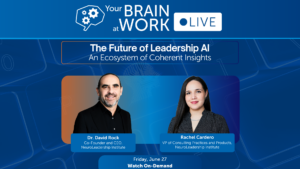Assessing “culture fit” shouldn’t be a gut decision. Here’s how to interview candidates with more precision, based on what your work culture is actually like.
One of the hardest parts of hiring new employees is figuring out how well they’ll fit into your work culture. Unlike education and job experience, where there may be specific credentials you’re looking for, “culture fit” can be dangerously vague–and uniquely vulnerable to unconscious bias.
Still, hiring managers tend to take pride in trusting their gut, and many screen for culture fit the same way: They get a candidate talking, try to establish rapport, and then make an intuitive judgment about whether the person would get along well with current employees. But since we all gravitate toward people we consider to be similar to us, even the most scrupulously fair hiring managers tend to think more favorably of people who remind them of themselves. The result is an uneven process that limits diversity and fails to secure the best talent.
The solution? A more structured interviewing process that’s designed to reflect what your work culture is actually like–and getting more specific about what traits it demands. This also means asking the same questions in the same order with every candidate, and being systematic about how you score responses.
Here’s what to ask candidates–and what responses to listen for–depending on the nature of your work culture.
1. AN INDEPENDENT, ENTREPRENEURIAL CULTURE
To assess a candidate’s ability to work independently in an environment made up of solo operators, try using a prompt like this:
Tell me about a time you planned and executed a project with little or no supervision. What approach did you take to achieving your goals, and what was the result? What challenges came up along the way, and were you able to solve them on your own?
The idea here is to look for evidence of autonomy, focus, and resourcefulness. Listen for (and score candidates against) these three job skills in particular:
- Vision: Do they set and achieve goals on their own?
- Planning: Can they organize, schedule, and formulate a clear strategy on their own? And how well does that plan actually reflect the underlying vision?
- Execution: Do they manage their time efficiently and stay on task without much oversight? How well do they make critical decisions and solve problems without outside help? When the unexpected happens, how well do they adjust and without leaning on directions from a superior?
2. A COLLABORATIVE CULTURE
Other work cultures are much more team-focused, and collaboration is more important than autonomy. To assess an employee’s ability to work on this kind of team, try a prompt like this:
Tell me about a time you worked with a team. What was your approach to collaborating with your teammates? What role did you play on the team and how did you contribute? What were some of the benefits you experienced from working collaboratively? What collaboration challenges arose, and how did you address them?
Here’s what to look for in a good team player:
- Work style: Does the candidate enjoy working collaboratively and thrive in a team environment?
- Collaborative mentality: Does the candidate prioritize the success of the team above their own individual goals?
- Collaboration skills: Does the candidate have the interpersonal and communication skills to work well with others? How well does the candidate contribute individually to the goals of their team?
3. A CHANGING CULTURE
Maybe your organization is evolving rapidly, or perhaps you’re actively in the midst of a culture shift. To get through this transitional period (and thrive as an organization afterward), you’ll need to hire someone who can not only adapt to change but help push the culture in the direction it’s moving. So try a prompt like this:
Tell me about a time you encountered a difficult problem you didn’t know how to solve. Maybe you were asked to perform a task outside your job description, or maybe you had to master a new system, process, or technology. What was your approach to learning new skills? How did you deal with the challenge and uncertainty? And what did you learn from the experience?
What you’re looking for here is adaptability, resilience, and the ability to achieve goals and thrive in the face of uncertainty. Specifically these three attributes:
- Growth mind-set: Does the candidate view their skills and abilities as fixed and unchangeable, or do they believe they can learn new things and grow in order to meet unfamiliar challenges?
- Agility: How does the candidate react to change? Do they see change as a threat or welcome it as an opportunity to rise to the occasion?
- Emotional regulation: How does the candidate react to stress and failure? Do they find negative emotions debilitating or motivating? Do they get overwhelmed or push ahead?
Of course, no job interview is completely free of bias, but the more concrete you can get on what you’re looking for in terms of culture fit, the better you can interview and select for it. After all, more deliberate and fair hiring decisions benefit everybody–no matter what your work culture might be like.






